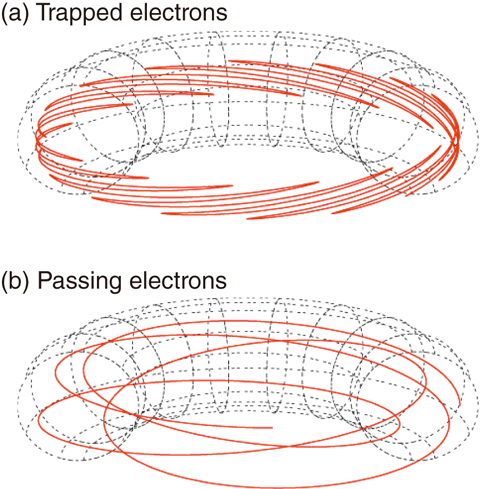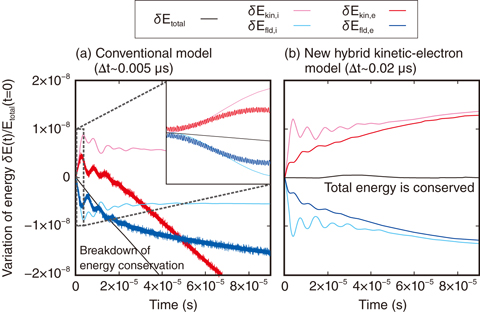
Fig.10-8 Electron orbits in fusion plasmas

Fig.10-9 Energy conservation in decaying turbulence simulations
Long-time-scale simulations of electron turbulence are essential for estimating turbulent transport of fuel particles and energy, which dictates the performance of fusion reactors. However, such a simulation is difficult because of fast electron motion. We have resolved this issue by developing a new electron model.
Fusion plasmas involve multi-time-scale phenomena such as gyro motion of charged particles along confinement magnetic fields (electron∼140 GHz, ion∼40 MHz), passing motion of charged particles in torus plasmas (electron~6 MHz, ion∼100 kHz), slow precession drifts of trapped electrons (∼100 kHz), plasma turbulence (∼100 kHz), collisions between charged particles (∼1 kHz), and a time scale of temperature-profile variations (∼1 s). The development of a first-principles model that analytically approximates gyro motion with higher frequency than plasma turbulence as well as advances in modern supercomputers have enabled simulations of ion turbulence covering time scales from those of plasma turbulence to those of temperature-profile variations. However, long-time-scale simulations of electron turbulence have been limited because the passing motion of electrons is two orders of magnitudes faster than plasma turbulence, and energy conservation cannot be maintained in the simulations.
To resolve this issue, we have developed a new electron model based on the properties of electron motion in fusion plasmas. Depending on the velocity, electron orbits are classified into trapped electrons, which are distributed in the outer torus region with weak magnetic fields and exhibit slow precessional drifts, and passing electrons, which exhibit fast passing motion in torus plasmas (Fig.10-8). The plasma turbulence is mainly excited by a resonant interaction with the former, while the latter generates high-frequency non-physical numerical noise. To enable low-cost and high-accuracy simulations by avoiding the high-frequency noise, in computing turbulent fields, the responses of passing electrons are approximated by an analytic solution for low-frequency fluctuations. Conversely, computation of collisions also requires strict treatments for passing electrons; thus, the same first-principles model is applied to both trapped and passing electrons. Such a hybrid electron model, in which different passing electron models are switched depending on physical processes, satisfies the reduction of computational cost and the improvement of energy conservation (Fig.10-9) and enables long-time-scale simulations of electron turbulence.
This work is supported by the Ministry of Education, Culture, Sports, Science and Technology of Japan (MEXT), Post-K Priority Issue 6, “Development of Innovative Clean Energy” (Core Design of Fusion Reactor).
<Previous: 10-3 | Next: 11 Development of Science & Technology for Nuclear Nonproliferation>